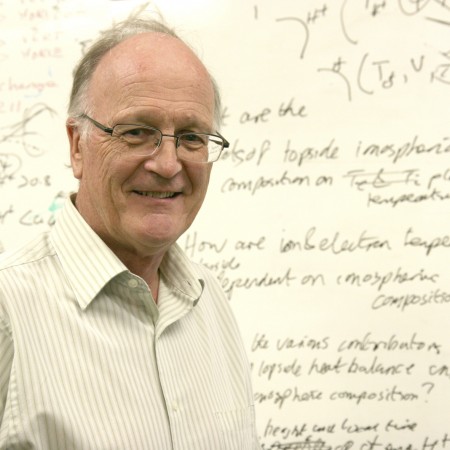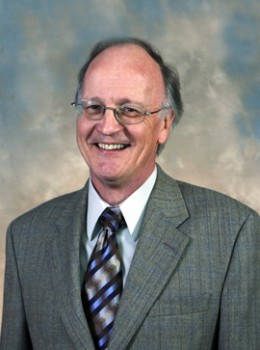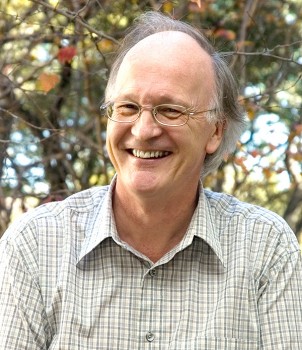
Roderick Heelis
Professional Preparation
University of Sheffield - 1973
University of Shefiield - 1969
Research Areas
Research Interests
My primary research interests center around the analysis and interpretation of data from Earth orbiting satellites. These data describe the density and motion of charged particles in the upper atmosphere. Theses particles are strongly influenced by the Earth's magnetic field and by electric fields that arise from motions of the atmosphere and the interaction of the planet with the interplanetary medium.
 Our data sources from the Defense Meteorological Satellite Program and from FormosaSat-1 are very extensive and with data visualization tools we are constructing a global description of the dynamics of the charged particles and how it changes in response to variations on the Sun. In 2006 we will launch a new satellite-based experiment to examine the relationships between charged and neutral motions at low latitudes in the upper atmosphere. New instrumentation being flown in this mission will require extensive development of software to produce geophysical parameters that will make up a unique data set that has never before been available from space.
Our data sources from the Defense Meteorological Satellite Program and from FormosaSat-1 are very extensive and with data visualization tools we are constructing a global description of the dynamics of the charged particles and how it changes in response to variations on the Sun. In 2006 we will launch a new satellite-based experiment to examine the relationships between charged and neutral motions at low latitudes in the upper atmosphere. New instrumentation being flown in this mission will require extensive development of software to produce geophysical parameters that will make up a unique data set that has never before been available from space.
Computer models of the upper atmosphere and ionosphere can also be extremely useful in studying the Earth's space environment. With these models we conduct numerical experiments to understand the extremes of behavior that can be achieved with different drivers for electric fields. Comparisons between these numerical results and experimental data from space and from the ground are an important part of the analysis and interpretation procedures that we undertake.
In addition to these scientific studies I'm also interested in new techniques to obtain thermal plasma measurements and reduce the data. Among my present interests in this area are cylindrical section collectors and methods for deriving constituent ion temperatures in the upper atmosphere
Publications
Awards
Appointments
The University of Texas at Dallas [2002–Present]
The University of Texas at Dallas [1994–Present]
The University of Texas at Dallas [1989–Present]
The University of Texas at Dallas [1986–1994]
The University of Texas at Dallas [1973–1986]
The University of Texas at Dallas [1972–1973]
University of Sheffield [1969–1972]
Additional Information
Professional Recognition and Honors
- Fellow, American Geophysical Union, 2006
- American Geophysical Union, Nicolet lecture, The Dynamic Ionosphere 2006
- Gaseous Electronic Conference Keynote Address Natural Plasmas in Space 2008
Professional Memberships
- American Geophysical Union 1973-present
- Sigma Pi Sigma 1980-present
Service
School Committees2006-2008 Faculty & Personnel Review Committee
University Committees
2005 Committee on Information Resources
2006 Research Advisory Committee
2007-2009 Committee on Faculty Standing and Conduct
2007-2009 Intellectual Property Committee
Internal Special Service
2005 Graduate Curriculum
2006-2007 Department Web Curator, Department Graduate Curriculum
2008-2009 Department Advisory Committee
2008-2008 Department Qualifying Examination Committee
External Service
2005 Member NASA Geospace Mission Definition Team
2005-2009 American Geophysical Union Session Convener for Spring and Fall Meetings
2005-2009 Referee for:
Journal of Geophysical Research,
Geophysical Research Letters,
Annales Geophysicae,
Journal of Atmospheric and Solar Terrestrial Research.
2007-2009 Associate Editor, Journal of Geophysical Research
American Geophysical Union Session Convener for Fall Meeting
2007-2009 Reviewer for
National Science Foundation
NASA Supporting Research and Technology
2008-2009 Member, NASA Living with a Start Management Operations Working Group
2007-2009 Team Leader., NASA Targeted Research Group on Global Distribution, Sources and Effects of Large Density Gradients
2008 Chairman, NRC Committee on the Performance Assessment of NASA Heliophysics Division
2009 Member, International Advisory Board, Journal of Terrestrial, Atmospheric and Oceanic Sciences.
News Articles
A Conversation With Dr. Roderick Heelis
 We sat down for A Conversation With...Dr. Roderick Heelis, the Cecil and Ida Green Honors Professor of Physics and director of the William B. Hanson Center for Space Sciences at UT Dallas. Dr. Heelis is a fellow of the American Geophysical Union, an international scientific society devoted to the research of the Earth and space. He joined the UT Dallas Center for Space Sciences in 1973, after graduating from the University of Sheffield (England) with a Ph.D. in applied and computational mathematics. Heelis is an expert on “space weather,” the phenomenon of disturbances that occur in the ionosphere, the gaseous band of charged particles that surround the Earth. Space weather “storms” can disrupt GPS signals and wreak havoc on navigation systems for planes, trucks, ships and even missiles.
We sat down for A Conversation With...Dr. Roderick Heelis, the Cecil and Ida Green Honors Professor of Physics and director of the William B. Hanson Center for Space Sciences at UT Dallas. Dr. Heelis is a fellow of the American Geophysical Union, an international scientific society devoted to the research of the Earth and space. He joined the UT Dallas Center for Space Sciences in 1973, after graduating from the University of Sheffield (England) with a Ph.D. in applied and computational mathematics. Heelis is an expert on “space weather,” the phenomenon of disturbances that occur in the ionosphere, the gaseous band of charged particles that surround the Earth. Space weather “storms” can disrupt GPS signals and wreak havoc on navigation systems for planes, trucks, ships and even missiles.
Solar Flares May Interrupt GPS Navigation, Researcher Says
 If your GPS navigation system goes on the fritz in the coming days, you might have the sun to blame. Early this week, the sun released four X-class solar flares, the strongest type of flare. Forecasters at the National Oceanic and Atmospheric Administration predict a 40-percent chance of more X-class flares in the coming days, some possibly pointed toward the Earth. Dr. Roderick Heelis, director of the William B. Hanson Center for Space Sciences and holder of a Distinguished Chair in Natural Sciences and Mathematics at UT Dallas, is an expert on the interaction between the sun and planetary environments, as well as the dynamics of charged particles in the Earth’s upper atmosphere. He and his colleagues measure weather in space with sophisticated instruments that fly on satellites, and they create computer models designed to predict space weather.
If your GPS navigation system goes on the fritz in the coming days, you might have the sun to blame. Early this week, the sun released four X-class solar flares, the strongest type of flare. Forecasters at the National Oceanic and Atmospheric Administration predict a 40-percent chance of more X-class flares in the coming days, some possibly pointed toward the Earth. Dr. Roderick Heelis, director of the William B. Hanson Center for Space Sciences and holder of a Distinguished Chair in Natural Sciences and Mathematics at UT Dallas, is an expert on the interaction between the sun and planetary environments, as well as the dynamics of charged particles in the Earth’s upper atmosphere. He and his colleagues measure weather in space with sophisticated instruments that fly on satellites, and they create computer models designed to predict space weather.
UT Dallas Professors Experiment Blasts into Space
 An experiment run by a UT Dallas professor launched successfully this month into space on its way to a greater understanding of mysterious plasma bubbles that interrupt radio signals. Dr. Roderick Heelis is heading the experiment, called the Coupled Ion Neutral Dynamic Investigation, more affectionately known as CINDI. Dr. Heelis holds a Cecil H. and Ida Green Chair in Systems Biology and is director of the William B. Hanson Center for Space Sciences at UT Dallas. The NASA-sponsored mission is being conducted in cooperation with the Air Force. The rocket carrying CINDI launched from the underbelly of an Air Force plane on April 16. The plasma bubbles that CINDI will investigate occur mainly above Earth’s equatorial region but wreak havoc on radio communications worldwide. “Understanding when and where plasma bubbles occur, how severe they will be and how long they will last is vitally important since interference from plasma bubbles affects GPS signals and other radio signals that can travel around the globe by reflection from layers in Earth's upper atmosphere, called the thermosphere and the ionosphere,” Dr. Heelis said.
An experiment run by a UT Dallas professor launched successfully this month into space on its way to a greater understanding of mysterious plasma bubbles that interrupt radio signals. Dr. Roderick Heelis is heading the experiment, called the Coupled Ion Neutral Dynamic Investigation, more affectionately known as CINDI. Dr. Heelis holds a Cecil H. and Ida Green Chair in Systems Biology and is director of the William B. Hanson Center for Space Sciences at UT Dallas. The NASA-sponsored mission is being conducted in cooperation with the Air Force. The rocket carrying CINDI launched from the underbelly of an Air Force plane on April 16. The plasma bubbles that CINDI will investigate occur mainly above Earth’s equatorial region but wreak havoc on radio communications worldwide. “Understanding when and where plasma bubbles occur, how severe they will be and how long they will last is vitally important since interference from plasma bubbles affects GPS signals and other radio signals that can travel around the globe by reflection from layers in Earth's upper atmosphere, called the thermosphere and the ionosphere,” Dr. Heelis said.